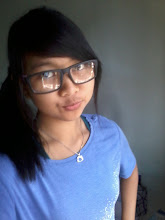





 |
| Gabusan Art Market
There is another way to enjoy art works of Bantul people without having to wander about villages that produce them, namely by visiting Gabusan Art Market. The market that is located on Jalan Parangtritis km 9 has been the center of handicrafts trading for the last 2 years. Other facilities such as cafeterias, information technology access and groceries are there for you, too.
Gabusan was designed to open access for craftsmen to international market. For the reason, the design of the market accommodating around 444 craftsmen is of international standard. The design of the market was done by both domestic and foreign architects by, of course, accentuating local architecture. Divided into 16 stalls, Gabusan sells handicrafts of various raw materials, ranging from leather, metals, wood, clay to water hyacinth
Arriving at the area of Gabusan market, you will be greeted by an interestingly designed gate. On the gate, there are restaurant, crossing bridge and ramp. Having your meals in that restaurant, you will be able to see the entire market from the top view. Close to the area, there is a shop as an information center as well as the place for visitors to get their stuff. This shop is designed so artistically that it has its own interest.
Entering the first stall, you will enjoy bag handicraft made from rattan. Neat woven of the bag gives durable image and combination of the cloth and accessories gives meaningful added value. Various unique, elegant designs produce multifunctional bags for multi purposes. Other handicraft that is available in that stall is a box made from woven bamboo. Despite its simple design and function, the box still looks unique in various bright colors.
If you want to buy candle stands for your guest rooms, you will find them in stall eight. Many types of candle stands from different materials are available. There is a candle container forming like a small, brown bowl with string decoration around it. Another candle stand is made from bamboo some part of which sides are split to make stands with string ornaments on them. In addition to functioning as stand for the glowing candle, the beautiful design of it will attract your guests in your guest room.
|

